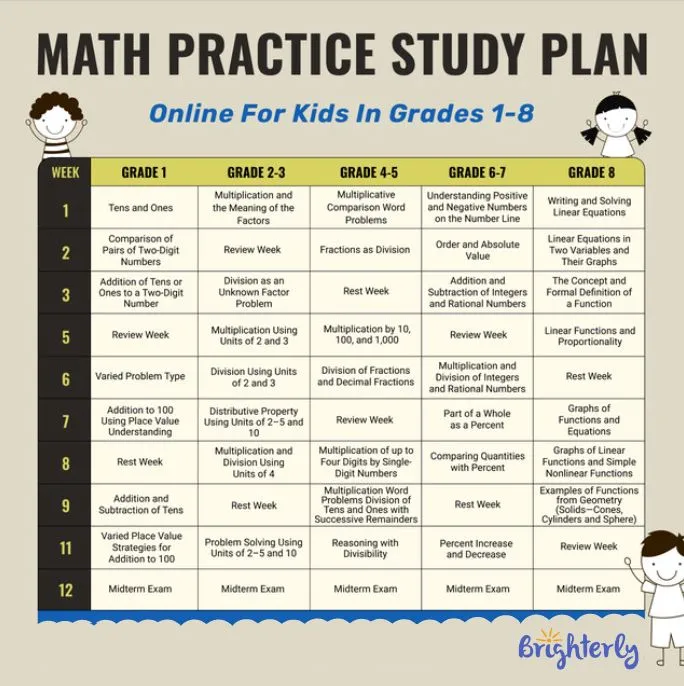How to Make a Homeschool Schedule
reviewed by Jo-ann Caballes
Updated on August 7, 2025
If you’re a homeschool parent, you’ve most likely given it a thought or two of how to create the most effective homeschool schedule. Making a good homeschool schedule is not about building your life around it, but rather the opposite.
A productive homeschool agenda is about inspecting what works best for your family’s lifestyle. In other words, it should support your existing lifestyle and not require you to adapt to it. Here are some of the best ideas for creating a homeschooling schedule that works for children of all ages.
How to schedule homeschool day
When parents plan their homeschool day, they usually try to imitate traditional school since most of them used to attend it. While this may work for some, parents have to keep in mind this important aspect: the best thing about homeschooling is flexibility. Besides, it’s nearly impossible to keep a homeschool daily schedule the same, so trying to make it happen will probably bring a lot of frustration to both parents and kids. However, it doesn’t mean that planning a simple homeschool schedule shouldn’t take place. Let’s discuss some helpful tips to build a homeschool day.
Top tips for planning a homeschool daily schedule
- Decide which subjects you will teach
- Schedule homeschool hours
- Make an outline for the day
- Use a planner
Decide which subjects you will teach
Knowing which subjects you teach on which days will help you and your kid to keep track of what’s next. Plus, it will eliminate questions like “What are we doing today?” from your students.
Schedule homeschool hours
A homeschooling schedule can be a struggle if you don’t schedule homeschool hours. Starting class at a specific time each morning adds structure to the day. But that is not everything to homeschool hours—you have to plan out which hours you’ll be teaching so your kid knows that these hours are for learning.
Kacie Barlow, the founder of The Honeyroot blog, likes to begin with core academic subjects in the morning works best, as my children (and most children) are more alert during that time. Here’s how she creates her homeschool curriculum schedule:
“From 9:00 AM to 12:00 PM, we focus on core subjects like Math, Science, and Language Arts since my kids are most alert in the morning.”
We have lunch and a break from 12:00 PM to 1:00 PM, which gives everyone some downtime.
In the afternoon, from 1:00 PM to 3:00 PM, we tackle less intense subjects like History, Art, or Music and often include hands-on activities or experiments.
From 3:00 PM to 4:00 PM, we have time for physical activities or extracurriculars like sports or playing outside. This time isn't necessarily homeschool time, but we include these things in our everyday routine.
Amanda Schenkenberger, Homeschool Coach at Homeschool Family Legacy, relies heavily on routines. She suggests that routines are a powerful way of organizing homeschool daily schedules for consistency and ease:
“The best way to create a routine is to start with a brain dump of everything you want included in your homeschool routine.”
Make an outline for the day
- Start the day with something hard.
For most children, math is an obvious choice, so making it the first lesson to get the hard stuff out of the way first would be optimal.
- Include active breaks and mental resets.
If your kid is younger, you can’t go far without the breaks. The duration and frequency depend on the age and other factors, but letting them have a little breather is as important as having the lesson itself. - No gadgets unless you absolutely need them. If your kid loves screen time, it’s better to avoid using electronics during school—it’s easy for a child to get distracted by technology.
Use a planner
Planner can help you keep yourself organized, even if something isn’t going according to your plan. You can also print out a planner with the curriculum so everybody can see it. Your students will be in the loop once you update or change your homeschool agenda.

How to make a homeschool schedule
Besides planning your day-to-day, you must think about how to create your long-term schedule and look at it through the annual lens. Ask yourself, what’s the big picture? What do you want to achieve by the end of the month, term, or year? Take into consideration that every kid is unique, so you have a beautiful possibility to move at their own pace and not the curriculum. Here’s a couple of tips on how to create a good homeschool schedule:
- Research the grade level standards
- Use prepacked curriculum
- Consider tutoring
- Experiment with the curriculum
Research the grade level standards
When you are ready to map up yearly goals, it’s best first to research the grade level standards for each subject. You can simply search for phrases like “2nd-grade math” or “what a 2nd grader should know in math” and review the standards on the academic websites.
Use prepacked curriculum
If you’re not sure about how to build a schedule for homeschool just yet, you can opt out for a prepacked curriculum. It comes with everything covered, so you don’t have to guess what your child should be learning.
Consider tutoring
Not all parents have enough knowledge to cover all of the lessons at home. Even though subjects like 1st-grade math are easy for an adult, you might not be well-equipped to transfer the right concepts to your kid. Online math tutoring platforms like Brighterly offer one-on-one tutoring sessions that align with the school math program but are customized to your child’s needs. Another advantage is that you can book the lessons whenever they are comfortable for you and your student.
Experiment with the curriculum
It’s OK to experiment with the type of schedule and the curriculum if you don’t see it fully fit. The flexibility of homeschooling allows you to adapt to find the best homeschool schedule for your little one.
Homeschooling schedule ideas
If you need some inspiration for your weekly homeschool schedule, here are some ideas.
Traditional block schedule
The first homeschool schedule example is the traditional block schedule. It works best for more structured families who prefer teaching specific subjects at a specific time. This way, parents structure the day into blocks of time dedicated to a specific subject.

Go-with-the-flow schedule
With a more relaxed homeschooling schedule, families focus on completing planned subjects throughout the day. Let’s say the school time is from 9 AM to 2 AM. During this time, you have to go through all of the subjects, no matter when specifically.
Loop schedule
This is an unusual one, but some people find it the most convenient. You create a list of subjects you have to complete in one week. Families can study whenever they want during the week, and once they are done, they just go to the top of the list in a looping way.
Toddler homeschool schedule
Preschoolers have short attention spans, which means they can concentrate longer than 15 minutes for one activity. Keeping the lessons brief and all-in, as well as mixing them up, can help manage boredom and maintain focus. Incorporating brain breaks every 15 minutes is also proven to be very effective.
Kacie Barlow emphasizes the importance of regular breaks:
“Regular breaks are really important.”
Kacie also shares how she structures toddler homeschool schedules. She divides activities into short periods, adding playtime and active breaks to ensure maximum focus. For example, she and her kids do short, fun learning activities like counting games, letter recognition, and simple crafts for 45 minutes in the morning. Then, they head outside for some playtime and exploration for another hour. This mix-up allows kids to avoid fussiness and unease during learning.
Homeschool high school schedule
Teens are often involved in extracurricular activities like part-time jobs, theater, volunteer work, etc., so it could be hard to find a consistent routine. Here are some tips on creating a homeschool schedule for high school.
Communicate effectively with your teenager
Ensure you clearly communicate your expectations and plans for the day, week, and term. Be supportive, as teenagers can be frustrated due to the hormonal and social changes—it’s completely normal. Creating some safe space would be beneficial both for you and your kid.
Print out the calendar
When you create a homeschool daily schedule template, be sure to include all of your teenager’s commitments and print them out. The large paper calendar makes an accessible visual for every family member, keeping everyone in the loop.
Plan out one week at a time
Sketching a weekly homeschool schedule can save you when your kid has a lot on their plate with jobs, friends, and other activities. A larger schedule works best with elementary and middle school when kids are less mobile than teens.
Typical homeschool schedule: Conclusion
Creating a homeschooling schedule can be a hassle when you don’t have the right tools for it. A good homeschool schedule should support a family’s existing lifestyle and not distort it. Tips like researching the grade level standards, using the prepacked curriculum, considering tutoring, and experimenting with the curriculum will help you build an effective overall schedule. Ideas like deciding which subjects you will teach, scheduling homeschool hours, making an outline for the day, and using a planner will help you create a compelling schedule for the day.
And if you want help along the way, Brighterly is here to save the day. With our expert-driven tutors, we will ensure your kid easily reaches their full potential in math.
Book a free lesson today and allow your kid to prosper in STEM fields in the future!
















